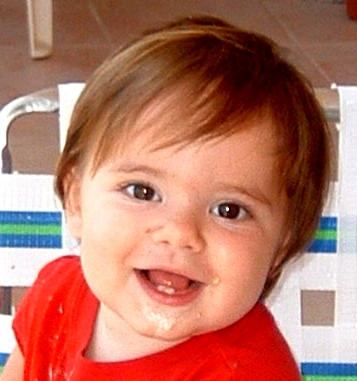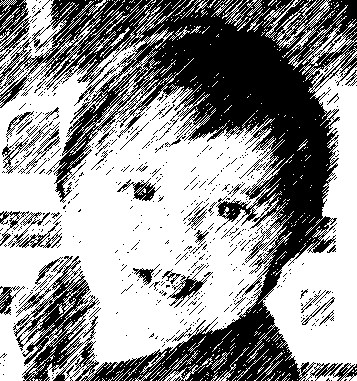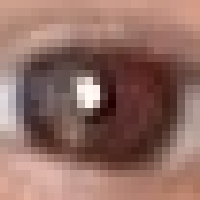


Similarly, an image processing program can resize, crop, adjust color and contrast, compress, and otherwise alter an image.
For example, I took a picture of my grandson Lucas with a digital camera. As you see, it is large (2,048 by 1,536 pixels), and is sideways. I used an image processing program to alter it.
The first thing I did was rotate it, then I cropped it to get a smaller picture. This cropped version is 357 by 381 pixels, and I used it as the starting point for the following steps.
My goal was to get a picture of Lucas that was exactly 200 pixels wide and an icon that was 50 pixels wide. I did not resize the picture immediately, but worked with it at full resolution. Resizing to fit your space should be the final step. Here are some of the things I tried:
| First I auto-adjusted the contrast of the 357 by 381 pixel image. |

|
| I did not like that, so I manually made a high-contrast version. |
|
| Just for fun, I made a "graphic pen" version. | 
|
| I liked the high-contrast image so I used it to make the 50-pixel icon. Note that this was the first time I resized the image. I had only cropped it to this point. | |
| I resized the high-contrast image to make the 200-pixel image needed to fit in the space on my Web page |
|
| Just for fun, I cropped the image to Lucas' right eye. |
|
| I then resized the eye to show graininess. If you plan to crop pictures, be sure you have a high-resolution camera or scanner. | 
|